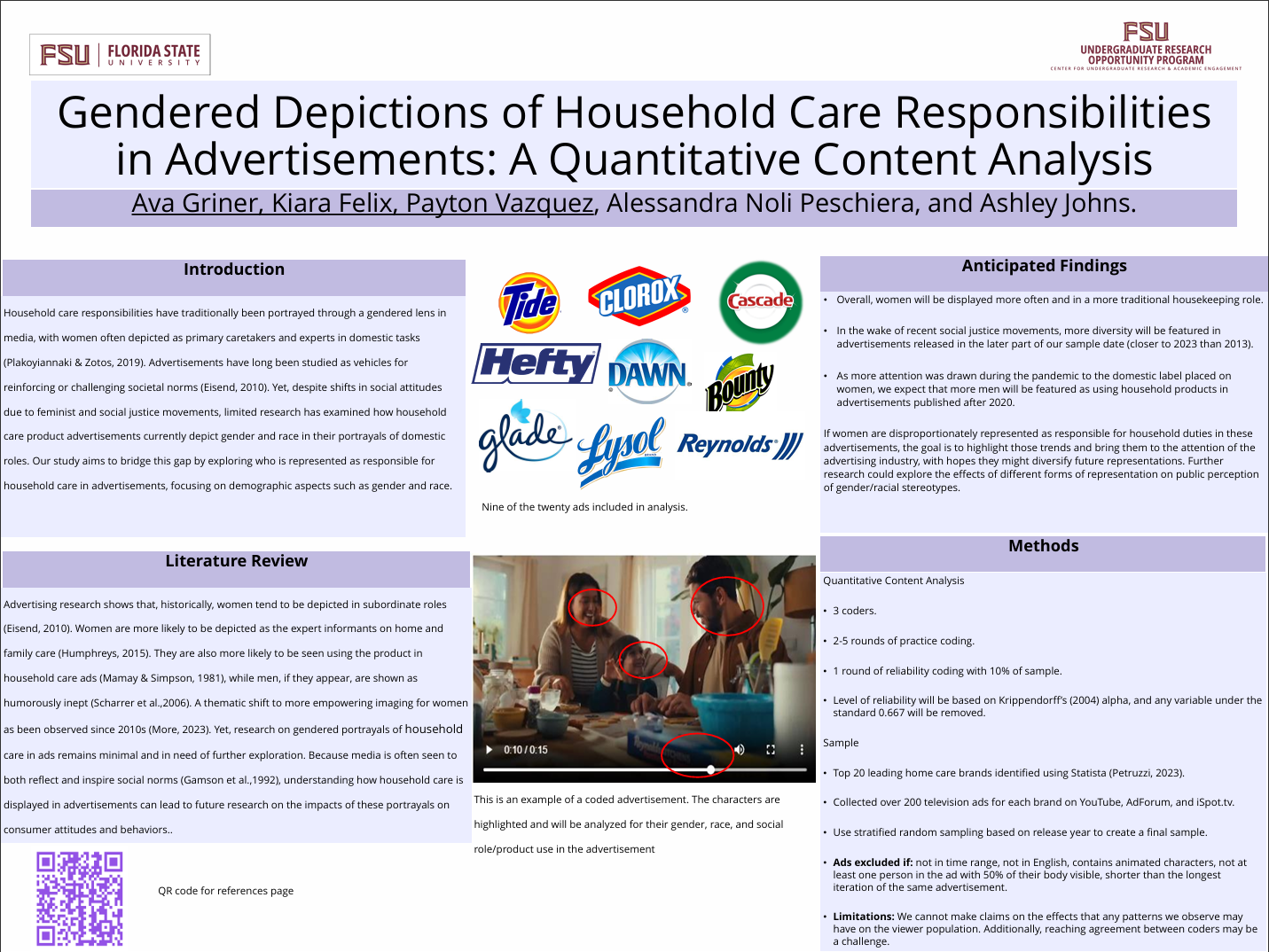Research Symposium
25th annual Undergraduate Research Symposium, April 1, 2025
Payton Vazquez Poster Session 4: 3:00 pm - 4:00 pm/ Poster #242

BIO
I am a second-year student from Tampa, FL. My research interests lie in the market research and advertising sectors, though my minor in Humanities has often led me to focus on the demographics of consumers and how that affects evolving marketing strategies and consumer behaviors. In addition to my schoolwork and research, I am also Assistant Director of Public Relations with FSU's college radio station, WVFS! My love of music drew me to the station, but its wonderful atmosphere has kept me there and pushed me to take on a leadership position as its future Director of Public Relations. In my free time, I enjoy creative writing. Though my personal manuscripts are fantastical, my hobby has taught me not to fear the demanding nature of scholarly reading and writing, both of which I plan to continue throughout my academic and professional career.
Gendered Depictions of Household Care Responsibilities in Advertisements: A Quantitative Content Analysis
Authors: Payton Vazquez, Alessandra Noli PeschieraStudent Major: Marketing
Mentor: Alessandra Noli Peschiera
Mentor's Department: School of Communication Mentor's College: College of Communication and Information Co-Presenters: Kiara Felix, Ava Griner
Abstract
Social learning theory and social cognitive theory both state that human behavior is greatly impacted by the representation of behaviors around them. The purpose of this study is to determine the representation of and expectations for behavior of demographic groups such as gender and race in household cleaning product advertisements. Quantitative content analyses are commonly used to determine the general distribution of characteristics across a set of media. Here, demographic based role assignment bias in cleaning product advertisements was measured using such an analysis. A reliable test was first built by a group of three coders through four rounds of practice coding and one round of reliability coding. Then, the advertisements to be featured in the final data analysis were coded and subsequently assessed to determine broader patterns. Bias in these advertisements has the potential to shape viewer’s expectations of individuals that fall into those demographics, thus pushing certain people into homemaker roles. There is a history in the United States of expecting women to be homemakers, and household product advertisements of the recent past consistently placed women characters into homemaker roles. It is necessary, then, to determine whether this pattern still exists, or if modern social justice movements have encouraged advertisement companies to produce a more diverse cast of characters, thus diversifying thought among viewers. Once the distribution of cleaning product advertisements is determined, it would be reasonable to pursue other forms of media, such as television and movies to truly understand the media atmosphere shaping American minds.
Keywords: Advertising, Gender, Race, Marketing, Business,


